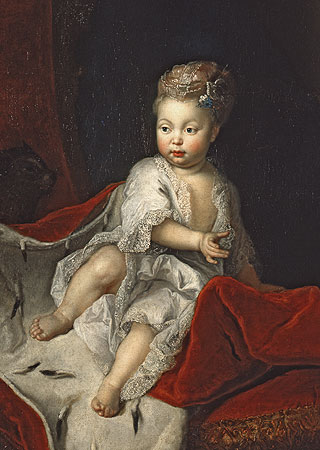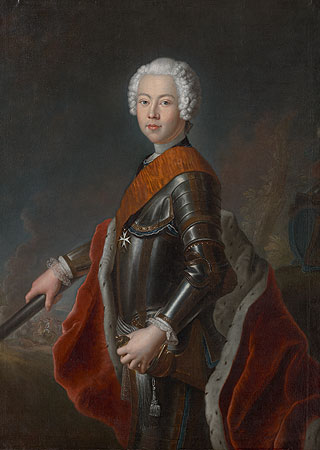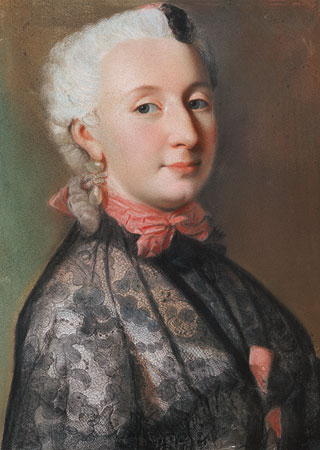Main information:
Margravine Wilhelmine
Margravine Wilhelmine was without a doubt one of the most outstanding women of the 18th century. Unlike Tsarina Elizabeth or Maria Theresia for example, Wilhelmine's successes were achieved not in politics but in the intellectual and artistic world. She represented an epoch of change, the Age of Enlightenment.

Princess Wilhelmine at the age of two
Antoine Pesne, c. 1711
Photo: Bayerische Schlösserverwaltung
Princess Friederike Sophie Wilhelmine was born on 3 July 1709, the daughter of the soldier king Friedrich Wilhelm I of Prussia and his wife Sophie Dorothea from the House of Hanover. She was the oldest of ten brothers and sisters; her brother Crown Prince Friedrich, who was three years younger, received the epithet ‘the Great’ when he in turn became king (Frederick the Great).
Soon after Wilhelmine's birth, the queen determined that her brother's son, who was the same age as Wilhelmine, was to be her daughter's future husband. The House of Hanover was expected to take over the English throne in the near future, and Wilhelmine would thus become Queen of England. However, this was not to be. For two decades the English court gave no clear signs that it approved of this marriage. The marriage question led to considerable tensions between Wilhelmine’s parents, as the opinion of the king, who was often influenced by self-seeking advisers, usually differed from that of his ambitious wife.

Crown Prince Friedrich von Bayreuth
Antoine Pesne, c. 1731
Photo: Bayerische Schlösserverwaltung
Finally, when the marriage plans came to nothing, they settled on the Bayreuth Crown Prince Friedrich (1711-1763). The idea behind this choice was to bind the small Franconian margraviate, which had in the past showed a tendency to drift politically towards the Austrian camp, more closely to their common origins.
The first impression the Bayreuth margraviate made on Wilhelmine when she passed the border was devastating. When she finally arrived in Bayreuth, her disappointment was even greater.
The palace in which she was now to live had none of the proportions she was used to from Berlin. However, she was fortunate in that she shared many artistic and cultural interests with her husband. On 30 August 1732 Wilhelmine’s only child, her daughter Elisabeth Friederike Sophie (1732-1789), was born.
Margravine Wilhelmine as builder

Wilhelmine von Bayreuth
Jean-Étienne Litoard, 1745
Photo: Bayerische Schlösserverwaltung /
Maria Custodis
Wilhelmine kept a lavish court and realized her potential with numerous building projects and rebuilding measures – involving both interior and exterior construction.
18th-century Bayreuth with its attractive palaces and parks is largely her work. She created a representative place for herself, designed according to her requirements and artistic preferences.
The highly talented margravine also participated actively in all the arts: she painted, composed, wrote plays, acted and directed. Her cultural interests are reflected in several of her building projects: in addition to the Margravial Opera House and two open-air theatres in the Hermitage Court Garden and the Sanspareil Rock Garden, the rebuilding of the Erlangen opera house and the renovation of the Bayreuth Ballroom were carried out at her instigation.
From a historical point of view it was due to Margravine Wilhelmine that Bayreuth became a milestone in the art and cultural history of Germany. She died at the age of 49 on 14 October 1758 and was buried in the palace church.


Facebook Instagram YouTube